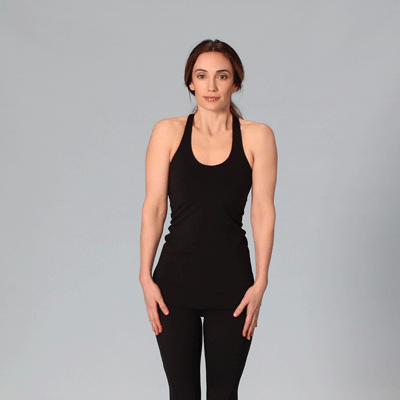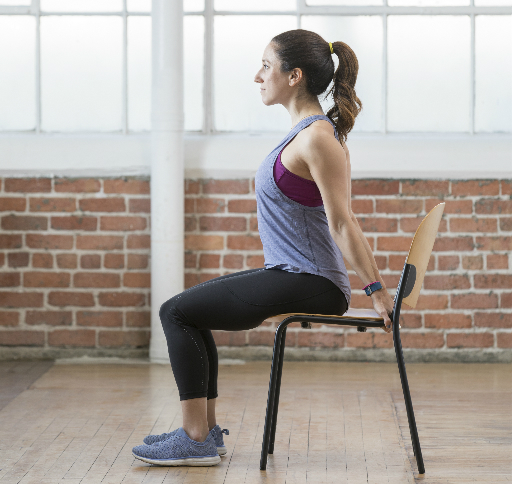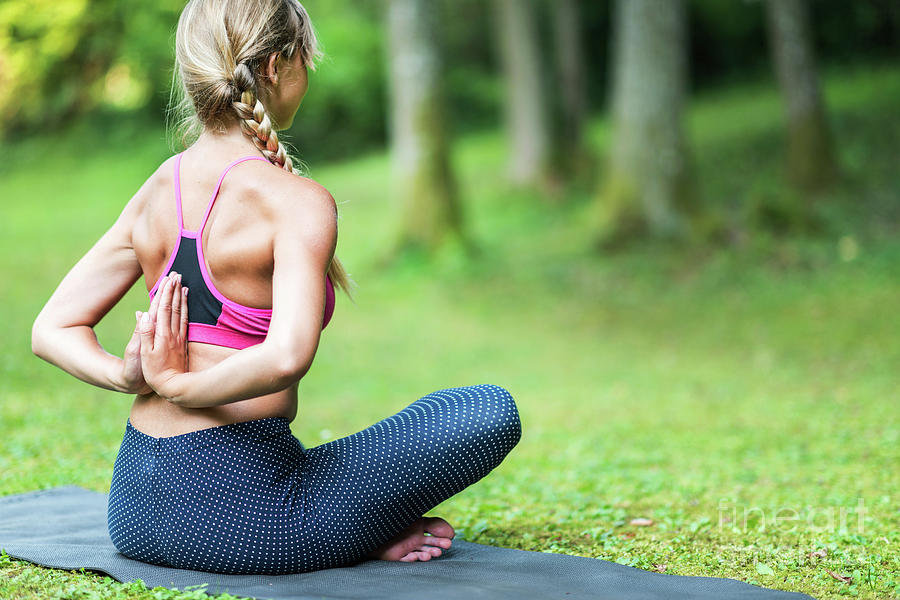Yogmaya
7 Yoga Poses For Office Workers
If you have a desk job that requires you to sit all day, you might have experienced lower back pain, tight hips or a sore neck. What’s more? You may also adopt the habit of slouching. Sitting too long at a desk or computer is like the new smoking. It does not only affects you physically, but slouching may also cause one to be at risk of depression and anxiety . These are signals telling you that you should move more or give your body a good stretch.When it comes to stretching, the best way is to do these 7 yoga poses for people who sit all day. It will help you undo the damage from your desk job and relieve any discomfort you might be experiencing right now.
1.Yoga Neck Stretches
"This will put a strain on your neck.Learning how to stretch your neck allows you to loosen the tension and stress in it. Your neck will instantly feel more comfortable and relaxed. Even it doesn’t seem to bother you right now, it’s still good to give your neck a little stretch once in a while.First, make sure you’re in a comfortable seat with your hands resting on your knees. Sit upright and relax your shoulders, and push your chin against your chest to straighten your spine. Next, gently roll your head to the right or left until your ear touches your shoulder - use one hand to push your head, and the other to slowly push your opposite shoulder in the other direction."
/Verywell-1-3567200-NeckRoll0-1379-5991bc7503f4020011a3d513.gif)
2.Shoulder Rolls
A good stretch on the back is what office workers need! Shoulder rolls are the perfect exercise for removing accumulated stress and tension in the shoulders and improving the circulation in those joints. This exercise warms up and stretches the muscles, tendons, and joints and helps reduce pain and stiffness in the shoulder area.Sitting upright, lift your right shoulder to your ear. Slowly roll your shoulder around and back, dropping it away from your ear. Lift your left shoulder to your ear. Slowly roll your shoulder around and back, dropping it away from your ear. Continue these rolls three more times, alternating right and left. Lift both shoulders up to your ears and hold for a breath. Release them, slowly rolling your shoulders around and back, dropping them away from your ear. Repeat five times and then relax your shoulders.

3.Open Chest Stretch
Tight chest muscles can lead to shoulder pain, neck pain, difficulty taking deep breaths, and difficulty lifting heavy things. Stretching your chest activates the chest muscles, stimulates blood flow, and can increase your short-term range of motion and flexibility.Sit near the edge of your chair and interlace your fingers behind you, palms together and facing your back. Lean forward slightly, lifting your arms so that you feel the stretch in your chest. Inhale slowly, lifting your chest. Exhale and relax your shoulders away from your ears. Hold for 10 to 15 breaths. Slowly release your hands and return them to your sides.Healthy adults should do flexibility exercises for all major muscle-tendon groups—neck, shoulders, chest, trunk, lower back, hips, legs, and ankles—at least two to three times a week. For optimal results, you should spend a total of 60 seconds on each stretching exercise.

4.Chair Twist
Sit near the edge of the chair, but turn your thighs toward the right side of the chair so that you are sitting diagonally. If you have an armrest on the side of your chair, bring your thighs as close to it as possible. Move your arm to the back of the chair on the opposite side, taking hold of the chair back with your right hand. With your left hand, take hold of your right knee or armrest. Breathe deeply, focusing on lengthening your spine. Twist to the right, pressing your right hand against the back of the chair to deepen the stretch. Focus on drawing your shoulder blades down. Breathe deeply, completely filling and emptying your lungs. Hold the pose for 10 to 15 breaths. Return to the center. Repeat on your left side.Chair Seated Twists help stretch the sides of the spine. This can help relieve aches from mild back issues caused due to sitting for long hours or with old age.

5.Reverse Prayer Pose
Sit near the edge of your chair. Reach your arms around behind you and bring your palms together, fingertips pointing down. Rotate your wrists and turn your fingertips in toward your spine until your fingertips are pointing up. Slide your palms back together in prayer position. Use one hand to help pull the other hand up further on your back, to a comfortable spot. Be sure your shoulders are straight, not rounded. Press the outside edges of your palms lightly into your back. Press your palms together gently. Press your feet into the floor. Breathe deeply, completely filling and emptying your lungs. Hold the pose for 10 to 15 breaths. Exhale and release your arms.

6.Twisted Arms
Sit upright without letting your back touch the back of the chair. Reach your arms out in front of you at shoulder level. Tuck your right elbow into the crook of your left arm, and curl your forearms up into a 90-degree angle. The backs of your hands will be against each other. If you can, place your left fingers on your right palm, keeping palms straight in a single line with your nose. Breathe deeply, completely filling and emptying your lungs. Hold the pose for 10–15 breaths. Return to the center. Tuck your left elbow into the crook of your right arm, and curl your forearms up into a 90-degree angle. The backs of your hands will be against each other. If you can, place your right fingers on your left palm, keeping palms straight in a single line with your nose. Breathe deeply, completely filling and emptying your lungs. Hold the pose for 10 to 15 breaths. Exhale and return to the center.Eagle Pose stretches the shoulders and upper back while strengthening the thighs, hips, ankles, and calves. It builds balance, calm focus, and concentration. Learning to open the back torso is beneficial for advanced inverted poses, such as Handstand (Adho Mukha Vrksasana) and Headstand (Sirsasana).

